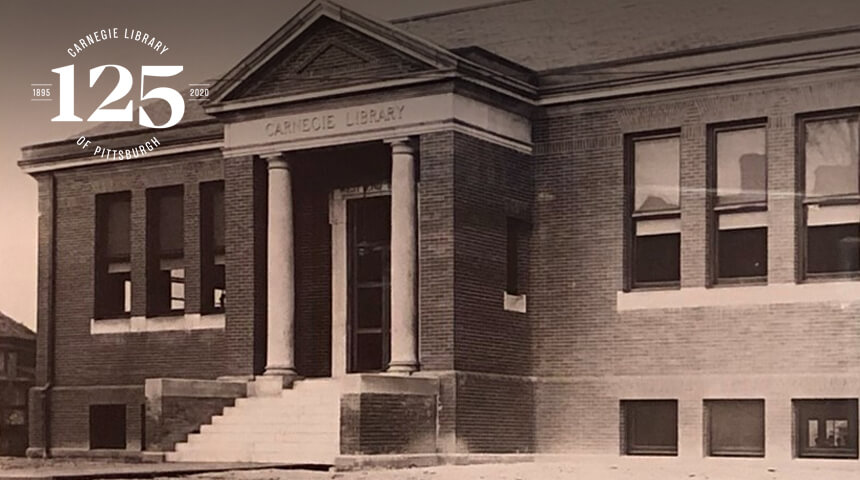When Andrew Carnegie donated his initial $1,000,000 to the City of Pittsburgh to build a library system in the late 1800s, he suggested building a large Main library and a couple of branches, similar to what other cities at the time had done. One of his suggestions for a library branch location was Temperanceville, which is known today as the West End Valley. Library leaders of the day took his suggestion, and four years after the Main Library opened, on February 1, 1899, what is now CLP-West End opened to the public. While in size and structure, it is very similar to other branches that opened around the same time, CLP-West End’s historical significance and interesting features help it to stand out amongst other branches in the Carnegie Library of Pittsburgh.
If you did the math, you’ll know that this year marks CLP-West End’s 122nd birthday! That is a very long time, so the interior was renovated and modernized in 2014. Even though it was renovated, the branch still retains some of its original features. A piece of the original circulation desk, as well as almost all of the original shelving, is still in use today.
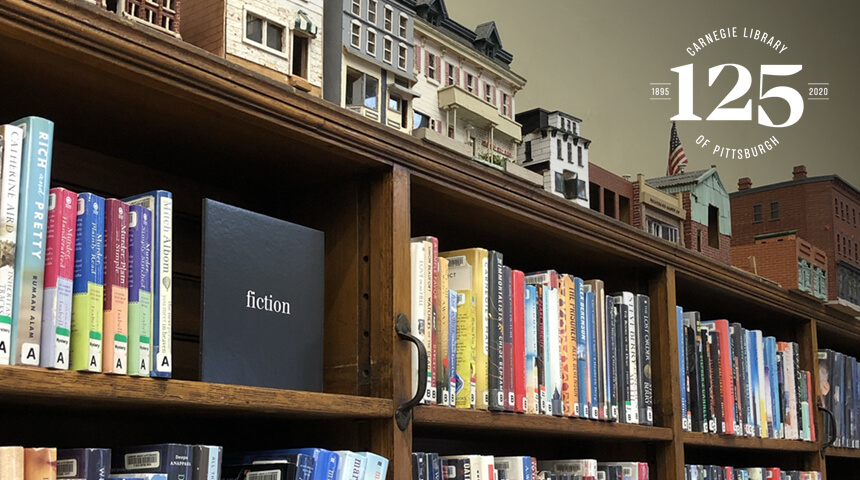
Additionally, the light fixture in the center of the library is designed to be very similar to the light fixtures that were present in the library when it first opened. Finally, although it is no longer housed at CLP-West End, the original phone booth that was part of the library now resides at the Main Library.
In these 122 years, staff at the West End Library have led the way in providing opportunities for literacy and learning for children and adults. CLP-West End is believed to be one the first, if not the first, libraries in the United States to offer story times for children! What is now a library staple across the country began as an innovative idea in the West End.
Story times have always been very popular programs at CLP-West End, enhanced by storybook character paintings in our meeting room. Painted on the storage cabinets in the meeting room in the 1950s by then CLP-West End custodian Theodore Hamiel, these illustrated panels feature popular characters from traditional folk and fairy tales – some recognizable favorites include Cinderella, Mary Poppins, and Pinocchio.
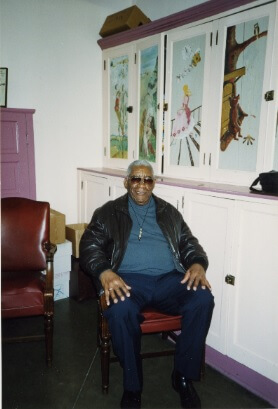
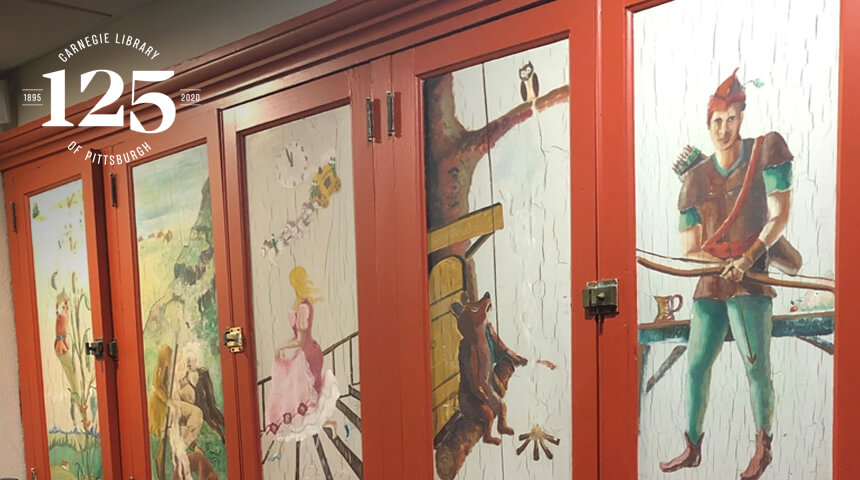
Speaking of storage cabinets, CLP-West End also has a storage closet turned into an archive! This accidental archive was formed when it was discovered that one of the closets had accumulated numerous objects relating to both the history of CLP-West End and the history of the West End neighborhood itself. With the help of volunteers from the West Pittsburgh History Club, West End staff processed the collection and properly preserved the materials housed there into archival quality boxes and folders. Now, library records such as circulation statistics and annual reports will be available for librarians and researchers alike to use. Besides historical library information, the History Closet holds other treasures, such as the Recollections and Reminiscences of West End, Pittsburgh, PA by Arthur Fording. Mr. Fording’s work provides key insights into what the West End was like in the 1920s, and for whatever length of time he could remember before that!
Finally, this wouldn’t be a blog post about the unique history of the West End if I didn’t talk about our model West End buildings. Not a day goes by where a customer doesn’t ask about these models. Created to provide a snapshot of what the West End looked like in the early 1970s, they were a retirement project for Nick Tutino, who generously donated them to the library once he finished.
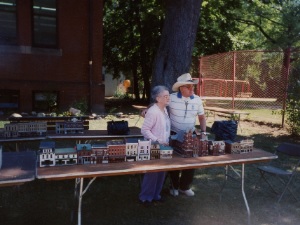
Many of the buildings he depicted are no longer standing, which makes identifying them and placing them accurately on a map difficult! If you might have a suggestion, feel free to stop by the West End (when we’re open to the public again) and take a look at them. While you’re here, you can also do some research in the History Closet, see if you know all of the storybook characters on Mr. Hamiel’s panels, or simply come and enjoy the rich history that permeates from every nook and cranny of this Pittsburgh Historical Landmark.

